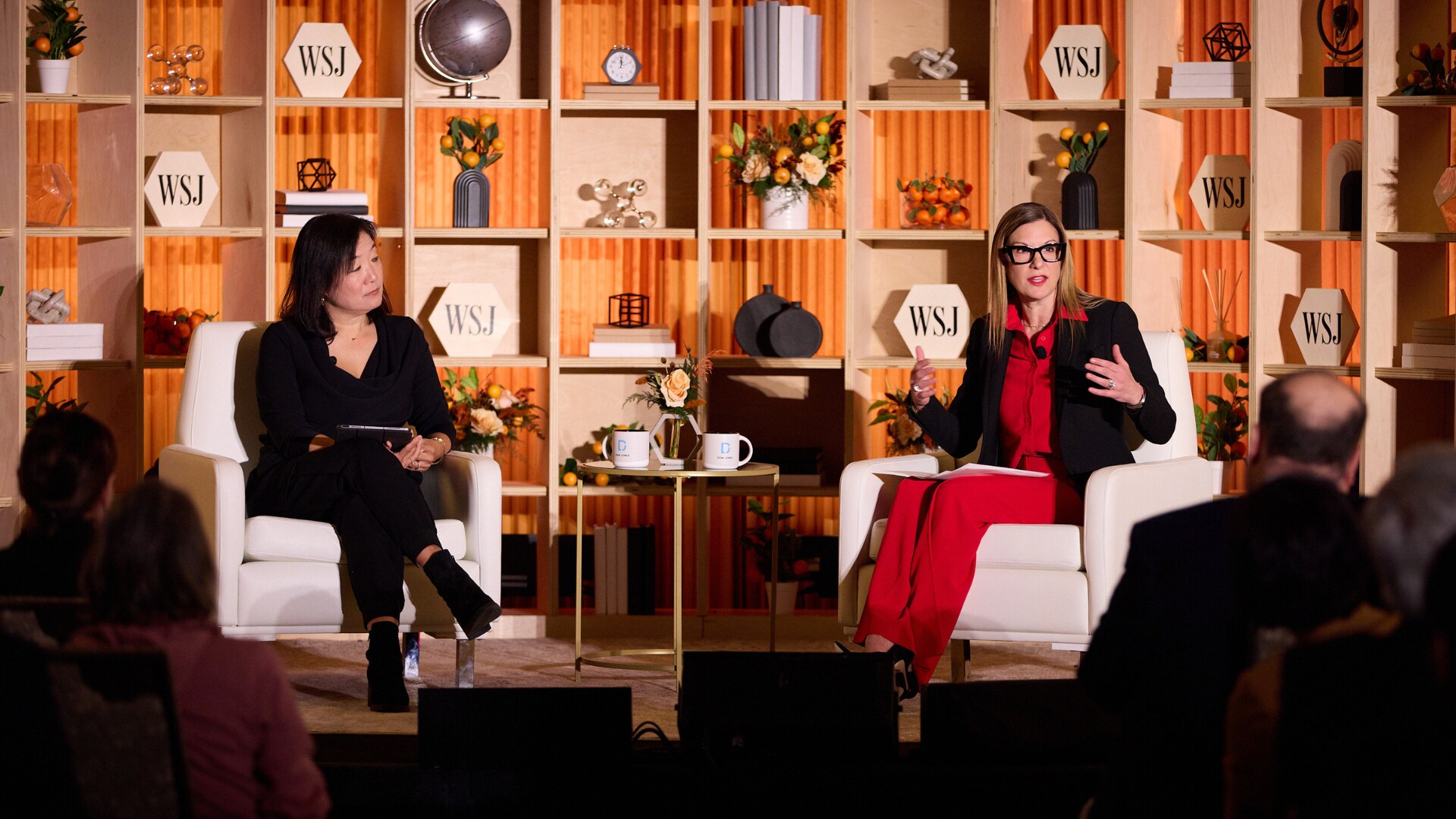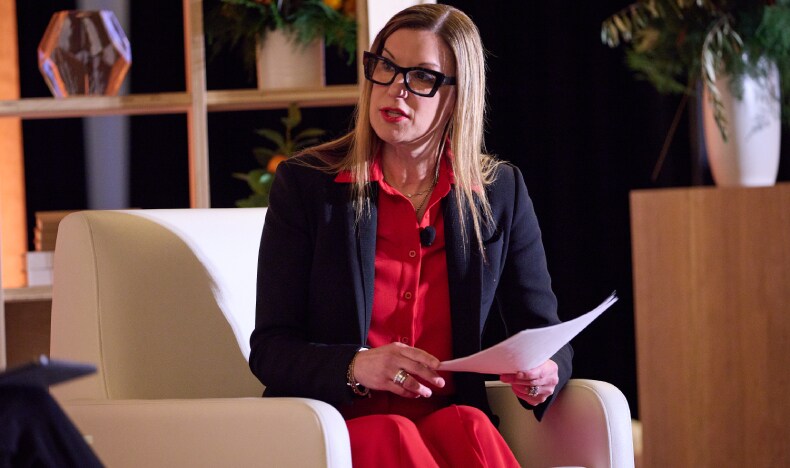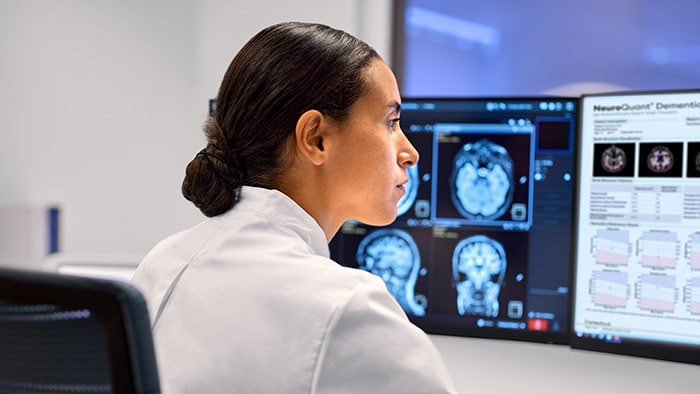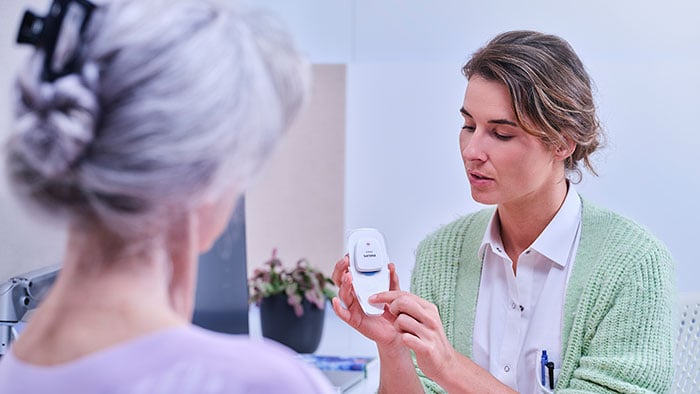
The challenge healthcare leaders face to solve health inequities is as daunting as it is huge. Some 3.5 billion people today – half the world’s population – lack access to the health services they need [1], making health equity this generation’s most significant health challenge.
But there is a path forward for the world to achieve health equity and to provide a fair, balanced standard of care for all people through collaboration, innovation, and action, says Julia Strandberg, Chief Business Leader of Connected Care and Monitoring.
Strandberg recently joined other influential industry leaders at the Wall Street Journal Health Forum. During her on-stage discussion, Strandberg shared how Philips is successfully partnering with other leading institutions to tackle an issue that is layered, complex, and historical.
“We're looking at where care needs to be delivered and how innovative new technologies can help extend access to care in new ways,” she said, calling the path forward an “evolution revolution.”

Empowering Patient-Centered Care
One of the biggest health disparities is inadequate access to care in rural areas, underserved communities, and other “medical deserts.” Strandberg said it is time to simplify traditional healthcare delivery models and meet patients where they are. The healthcare landscape is moving beyond the hospital to community care. We must continue innovating not just in the hospital, but around the patient.
Traditionally, patient care has followed a hub-and-spoke model, where hospitals were at the center of where care could be delivered, and alternative care methods served as the spokes. As we look ahead to where healthcare is headed, patients will be at the center of the model, allowing care to be delivered to them from virtually anywhere.
Rather than requiring underserved patients to travel to a clinic or hospital to receive care, Philips, in collaboration with universities, state agencies, and others, is bringing remote monitoring and mobile apps to deliver care to them.
Strandberg shared several examples of Philips’ patient-centered approach, including a two-year collaboration with the Michigan Department of Health and Human Services to deliver the Philips Pregnancy+ Advent mobile app to mothers and soon-to-be mothers on Medicaid. The app is having a tremendous impact, reaching 35% of Medicaid-eligible mothers in Michigan – or eight times better than the average Medicaid level of engagement.
“We connect mothers with resources and programs that are otherwise scattered and hard to find,” said Strandberg.
Other examples include remote monitoring solutions, such as Philips Ambulatory Monitoring technology, for Medicaid recipients with diabetes who require frequent testing to maintain appropriate blood glucose levels.
Technology can bridge the gap between where care is available today and where care is needed.
Working with Medicaid insurers, Medicaid participants using Philips’ connected devices were able to test themselves 24% more often than those without the technology. Strandberg said, when you combine collaboration with technological innovation, the result is powerful: Those participants in rural areas using connected devices and coaching from dieticians and nurses test 74% more often than compared to those with commercial insurance.
Enhancing Care Through Collaboration and Innovation
Collaboration and innovation are at the core of creating a healthcare system that is more resilient, equitable, and accessible for everyone.
Take the Emory Farm Worker Family Health Program, which is bringing essential healthcare services to the largest migrant population in the fields of southern Georgia. Emory University and field clinicians are using Philips’ Lumify portable ultrasound technology to diagnose conditions on-site. The program anticipates providing care for as many as 9,000 farmworkers and their families. It speaks to the power of a coalition of willing partners coming together to address a critical health equity issue for their community.
Another example of delivering healthcare to those who need it is a partnership with Roswell Park Comprehensive Cancer Center in Buffalo, NY. As part of the Project Eddy initiative, Philips Incisive Mobile CT technology provides innovative lung cancer screening services at familiar and trusted locations in high-risk communities, such as churches. This not only creates an environment where patients feel more comfortable, but it also empowers them to take control of their health, helping to create care pathways for early detection and treatment.

Coming Together for Our Communities and Patients
Strandberg called on other leaders, within and outside of healthcare, to come together to address the urgent need that is impacting our communities, referring to health equity as the “the greatest challenge of our time” in healthcare.
"We need to unite as a community and build a coalition of the willing. I ask you to raise your hands and let's play a role in building the right ecosystem. Together, we can bridge the gap and ensure equitable access to quality care for everyone.”
To learn more, and join Philip’ mission to improve health equity and access to care, visit: https://www.usa.philips.com/healthcare/resources/landing/health-disparities





